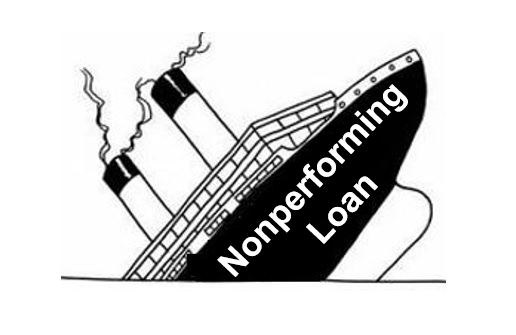What Is a Nonperforming Loan (NPL)? A Complete Guide
Aug 22, 2022 By Susan Kelly
A nonperforming loan defaults because the borrower hasn't paid on time for a certain amount of time. Depending on the loan's terms, "no payment" can mean different things, but most of the time, it means that neither the principal nor the interest has been paid. The time frame also depends on the type of loan and the business. The time is usually 90 or 180 days, though. Some banks decide to sell their loans that aren't making money to other banks or investors to get more money or focus on loans that are making money. A borrower can, however, start paying back a loan that has already been named "non-performing."
What is an NPL (Nonperforming Loan)?

Nonperforming loans are loans that aren't being paid back (NPL). Once a loan is not being paid back, it is doubtful that the person who borrowed the money will pay it back in full. Even if the debtor hasn't made up for all the missed payments, if they start making payments again on an NPL, it becomes an RPL. In banking, commercial loans aren't doing well if the borrower hasn't paid any interest or principal in the last 90 days or if the loan is 90 days late. An NPL is a consumer loan that is 180 days late.
A loan is in arrears when principal or interest payments are late or not made. When the borrower can't pay back the money and the lender thinks the loan terms have been broken, the loan is in default.
Different kinds of NPLs (Nonperforming Loans)
There are many ways to stop paying back a loan. Here are some examples of NPLs:
- A loan where the interest for 90 days has been capitalized, refinanced, or put off because of an agreement or changes to the original contract.
- A loan in which the payments are late by less than 90 days, but the lender no longer thinks the borrower will pay back the loan.
- A loan where the due date for paying back the principal has already passed, but some of the loan is still owed.
The Fair Debt Collection Practices Act says that people trying to get money for unpaid personal loans can't be unfair or dishonest. But this law only applies to people who aren't the original lender, like debt collectors or investors.
Definition By The ECB (European Central Bank)

The ECB (European Central Bank) needs to be able to compare assets and definitions to determine how exposed euro area central banks are to risk. The ECB lists the things that can lead to an NPL classification when it does stress tests on the banks. The ECB has done a thorough analysis and comes up with criteria for when loans are not paid back.
- Even if they haven't gone into default or can't pay, they are 90 days late
- When it comes to how banks do their accounting under U.S. GAAP and IFRS (International Financial Reporting Standards), they are not as good
- The Capital Requirements Regulation says that the company has broken the rules
In 2018, an addendum was made that told lenders how long they had to set aside money to cover loans that weren't being paid back. Whether the loan was secured or not, the time ranged from two to seven years. As of 2020, lenders in the Eurozone still had loans worth about $1 trillion that had not been repaid.
Definition by the IMF (International Monetary Fund)
The IMF (International Monetary Fund) also has a lot of rules about unpaid government loans. The IMF has said that loans that aren't being paid back are those that:
- The debtors haven't paid any interest or principal for at least 90 days
- Interest payments that are due in 90 days or more have been refinanced, capitalized, or put off by agreement
- Even though payments have been late for less than 90 days, there is a good chance that the debtor will pay in the future, but there is no guarantee
NPL (Non -Performing Loan) vs RPL (Re-Performing Loan)
Loans that aren't paid back aren't doing their job. Loans that are now being paid back are ones that weren't being paid back before. Before the loans that are currently performing again started, they had been late for at least 90 days. Most of the time, performing loans is loans for which the borrower has gone bankrupt but has kept making payments as part of the bankruptcy deal. Often, a loan modification program can help borrowers get caught up on their debt.
Conclusion
When the economy isn't doing well, people tend to stop paying back their loans. People who get these loans don't pay them back (or can't). If the loan hasn't been paid for a certain amount of time, it's called NPL (usually 90 or 180 days, but this varies by lender).








